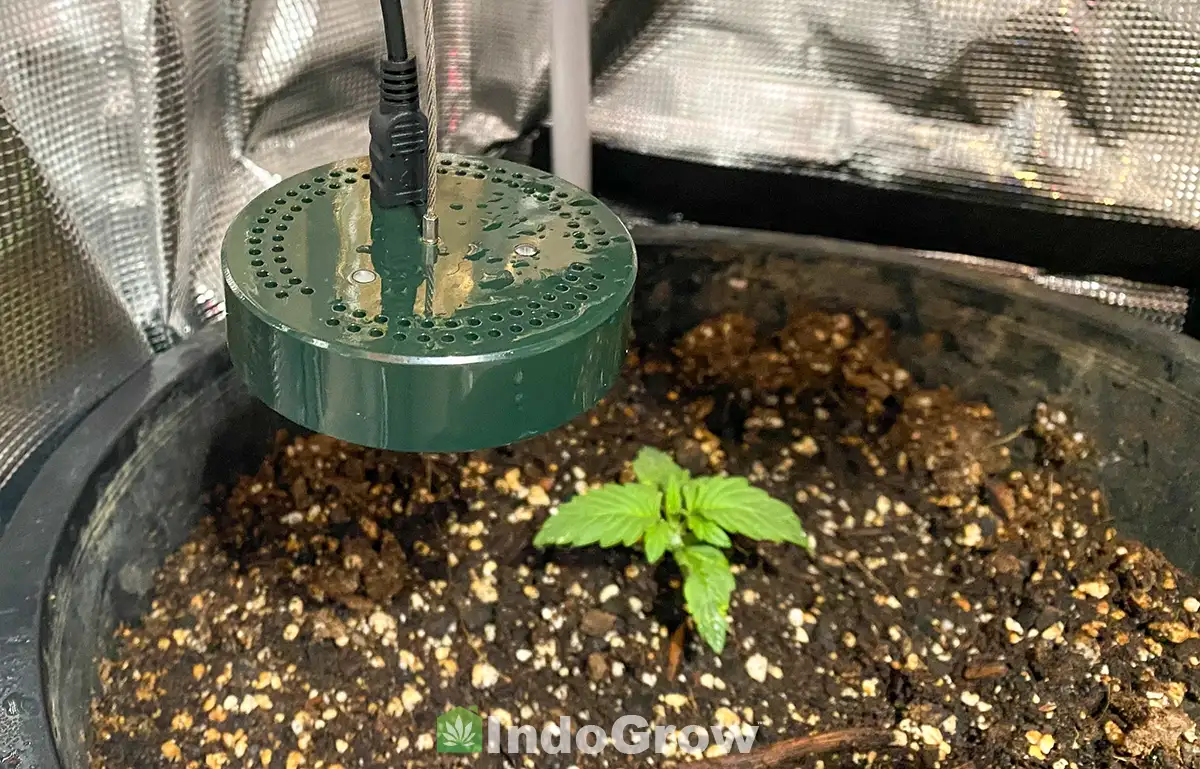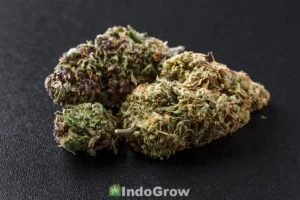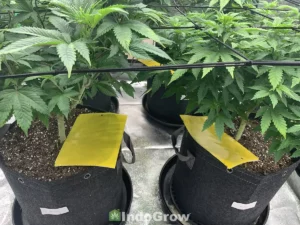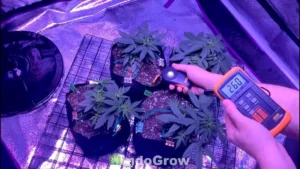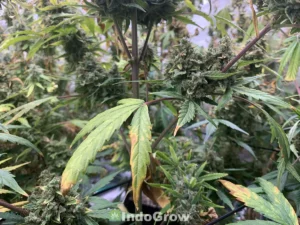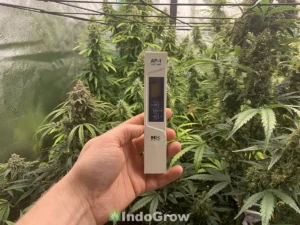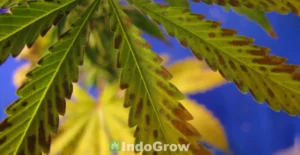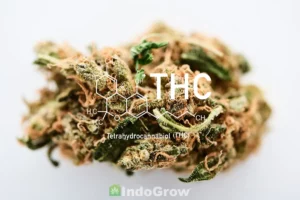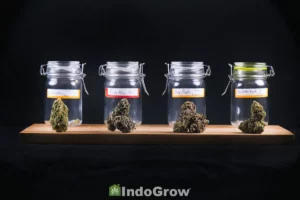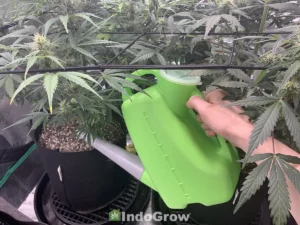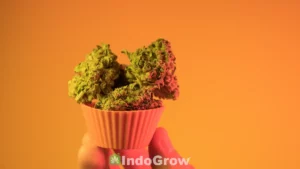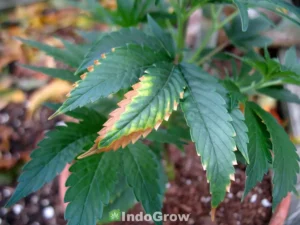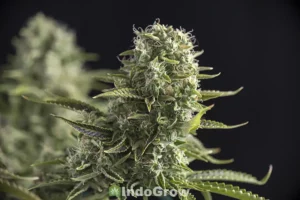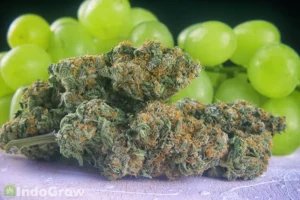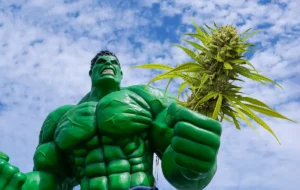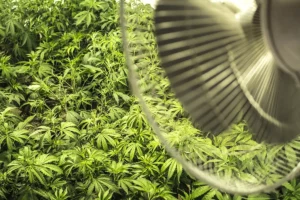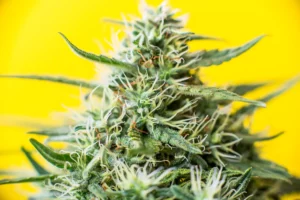Providing the best VPD for cannabis at each stage of life is essential for a healthy harvest. VPD is a measure of the moisture content in the air relative to its capacity to hold moisture. Creating an optimal indoor climate for cannabis with the right balance of environmental stimulation and stressors helps promote healthy plant growth and large yields.
By measuring and adjusting VPD values according to the different stages of growth, you can produce stronger, faster-growing cannabis plants. This article will explore the significance of VPD in cannabis cultivation, its relationship to temperature and humidity, and the best VPD ranges for each stage of the cannabis life cycle.
Table of Contents
- What is VPD for Cannabis?
- Why Does VPD Matter for Cannabis?
- Transpiration in Cannabis Plants
- Cannabis VPD Requirements
- Best VPD for Cannabis Seedlings
- Best VPD for Cannabis Vegetative Stage
- Best VPD for Cannabis Flowering Stage
- How to Measure VPD for Cannabis
- How to Adjust Cannabis VPD Levels
- Conclusion
What is VPD for Cannabis?
VPD, or vapor pressure deficit, is a measure of how much moisture is currently in the air compared to how much total moisture the air can hold. VPD values change based on temperature and relative humidity, so adjusting those two parameters to maintain an optimal VPD value for cannabis can lead to stronger, faster growing plants.
The best VPD for cannabis changes as the plant grows, with younger plants needing a lower VPD than more mature plants. Higher VPD is associated with faster rates of transpiration, and by extension faster photosynthesis and nutrient uptake. That being said, too high of a VPD value can overly stress the plants and lead to poor health, so finding an optimal balance between increased growth and increased stress is key.
Why Does VPD Matter for Cannabis?
VPD can be used to ensure that your plant is being kept at an optimal temperature for its relative humidity value and vice versa. Plants at lower temperatures will need lower relative humidity to prevent issues like mold or root rot, while plants at higher temperatures will need higher relative humidity to protect against dehydration or heat burn.
Although hot and humid vs cool and dry climates may subjectively feel very different, they can have similar VPD values. For example, a VPD of 1.0 (ideal for mid to late veg plants) could be achieved with a temperature of 83 F and a relative humidity of 75%, but it could also be achieved with a temperature of 70 F and a relative humidity of 60%. For this reason, understanding the relationship between temperature, relative humidity, and VPD is crucial to maintaining an ideal climate for your cannabis plants.
Transpiration in Cannabis Plants
After cannabis plants take up water through their roots, the water is pulled upwards through the plant and into the leaves where it evaporates through pores on the leaves’ underside called stomata. This process distributes nutrients from the roots throughout the plant, cools the leaves, and supports photosynthesis by creating an entrance point for carbon dioxide via the stomata. Between 95 to 99% of the water a plant takes up from the roots will eventually be released through transpiration.
The stomata are capable of opening and closing depending on the lighting and environmental conditions. The stomata usually close at night or in low humidity conditions to conserve water, while they open in high light and moderate to high humidity. However, excessive humidity will actually reduce evaporation from the stomata and slow transpiration rates.
Ideal VPD levels represent the compromise between temperature and humidity that leads to stomata staying open throughout the day. Maintaining a healthy VPD for weed creates the ideal environment for efficient transpiration, increasing photosynthesis and nutrient uptake by extension.
Cannabis VPD Requirements
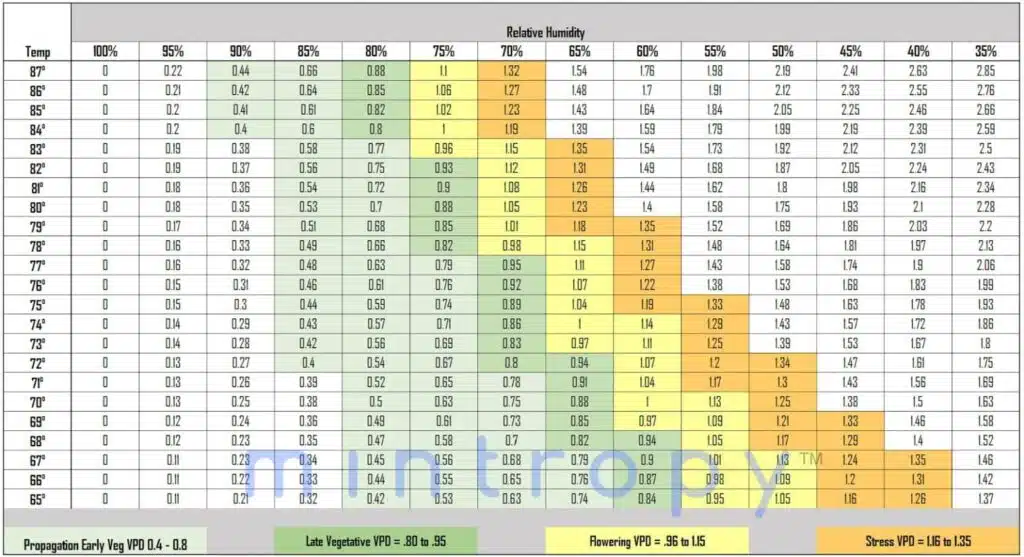
Cannabis plants need a VPD between 0.5 and 1.5, with the ideal VPD for cannabis increasing as the plant matures. Consulting a VPD chart can help you determine the ideal parameters for your grow room.
The best VPD levels for each life stage of weed will be discussed in greater detail below, with optimal values pulled from the VPD chart above.
Best VPD for Cannabis Seedlings
During the seedling stage, cannabis needs a VPD of 0.4 to 0.8. Young plants are still developing their root system and have smaller, more delicate leaves, so they are particularly sensitive to environmental stressors. Lower VPD levels correspond to slower transpiration but are also gentler on the plant during this critical stage of growth.
Best VPD for Cannabis Vegetative Stage
Vegetative stage cannabis VPD should fall between 0.8 and 1.1. VPD levels should rise slowly over the course of the vegetative stage, starting below 1.0 in early veg and increasing to around 1.1 by late veg. These values should provide the ideal balance of temperature and humidity to keep your plants transpiring throughout the day without becoming dehydrated or overly stressed.
A VPD for cannabis below 0.8 will lead to closed stomata and poor transpiration rates, while values above 1.1 have the potential to lead to adverse side effects such as dehydration, burning, and slowed growth.
Best VPD for Cannabis Flowering Stage
VPD for cannabis should continue to rise during the flowering stage from around 1.2 in early flowering to 1.5 in late flowering. These relatively high VPD levels will stress the plant enough to spur robust flower production. Although raising VPD helps increase yield up to a point, going above 1.5 is not recommended, as this will cause the plant to either close its stomata and reduce photosynthesis or leave them open and risk dehydration.
How to Measure VPD for Cannabis
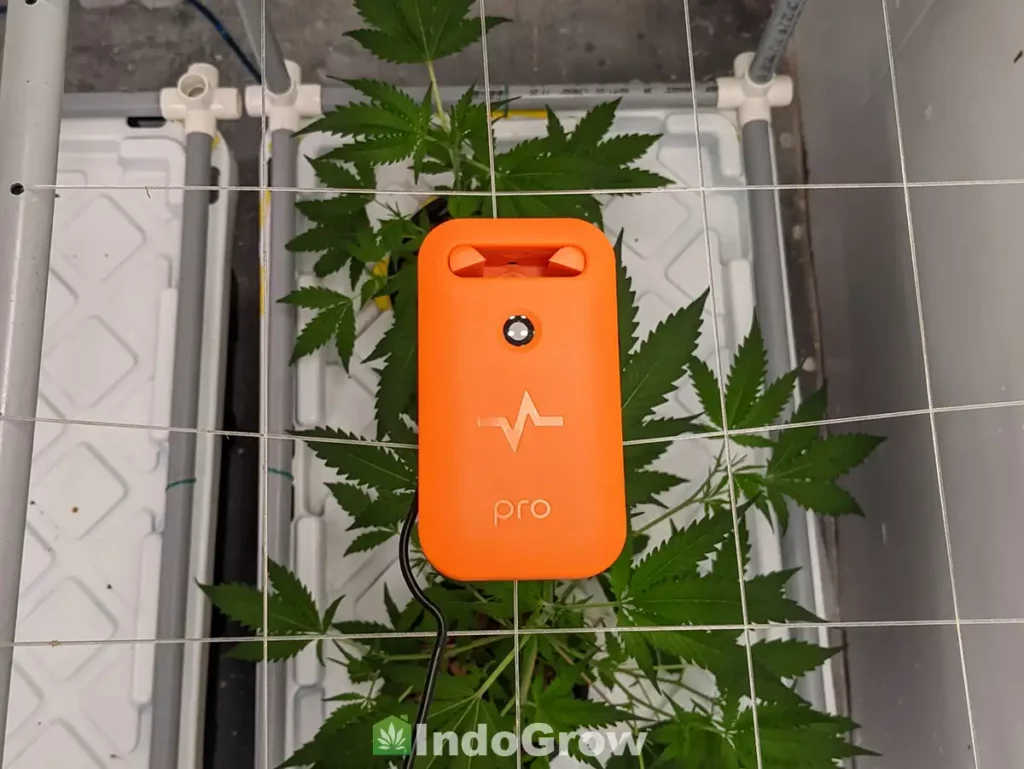
The easiest way to measure VPD is through the use of a VPD meter, such as the Pulse one. This helpful tool measures VPD as well as other parameters that can affect VPD and cannabis growth such as relative humidity, temperature, dew point and light intensity. The sensor can be checked anytime from your phone, and stores data to produce day and night averages for your setup.
Other brands such as Web Hydroponics also produce VPD meters at somewhat lower price points, although they don’t have the same range of features and connectivity options as Pulse meters. Simpler meters such as this will simply measure RH and temperature and calculate your VPD from there.
If you don’t want to purchase a VPD meter, VPD can also be calculated manually using this equation: VPD = (100-RH/100) x SVP. In this equation, RH stands for relative humidity while SVP stands for saturated vapor pressure. SVP rises alongside temperature, and values can be found on an SVP chart. For this equation, units should be in kiloPascals (kPa).
That being said, recalculating your VPD every day and trying to adjust it for each life stage manually can get old fast. If you are growing more than a small handful of plants at a time and want to optimize their VPD, purchasing a VPD meter will save you a lot of hassle in the long term.
How to Adjust Cannabis VPD Levels
Since VPD for cannabis is a measurement derived from temperature and relative humidity readings, the most straightforward way to alter VPD is by altering the temperature and/or humidity of your grow room. The next section will detail methods to raise or lower your VPD if your values fall outside the ideal range on the VPD chart.
Raising VPD for Cannabis
VPD will rise when temperatures increase or humidity decreases. As a general rule, daytime temperatures should not exceed 85 F and humidity should not drop below 40%.
Temperature can be increased by either turning down AC if you are using one, or adding a small space heater. If you are growing in a tent, place the AC or heater in the room outside the tent to prevent extreme temperature swings. You could also use your thermostat to increase the temperature of the entire home, although this is considerably less energy efficient.
The fastest way to lower humidity is to add a dehumidifier, preferably a commercial dehumidifier with either a large water tank or tubing to a location where water can be let out. Small dehumidifiers will fill up multiple times a day and be a large hassle to keep running.
Other methods to decrease humidity include increasing ventilation by adding more vents or opening a window (assuming the outside air is less humid), increasing the spacing between your plants, trimming the lower branches of your plants, and removing any stagnant water built up in drip trays or other reservoirs.
Lowering VPD for Cannabis
To lower cannabis VPD, you will need to either lower the temperature or increase humidity. As a general rule, daytime temperatures should not fall below 68 F and humidity should not exceed 70% during early veg or 55-60% during flowering.
The most reliable way to lower temperatures is to add or increase AC use. Running an air conditioner may actually lower humidity in the room as well, so be sure to keep an eye on both metrics. Increasing air exchange and ventilation will also help if the air outside your grow room/tent is cooler than the air inside.
Adding a swamp cooler, or evaporative cooler is another quick way to lower your VPD. These units work by blowing air over water to produce water vapor, both cooling the air and increasing humidity.
Lowering temperature without the use of an AC will naturally increase relative humidity, as cooler air can hold less total water vapor. Other methods to increase humidity include adding a humidifier, watering your plants more often, hanging moist towels near fans, or misting your plants with a spray bottle.
Conclusion
Measuring and controlling VPD is crucial for successful weed cultivation, as VPD optimized cannabis will have increased nutrient uptake, more rapid photosynthesis, and overall better health and vitality. Seedlings require VPD of 0.4-0.8, while vegetative stage benefits from 0.8-1.1. In the flowering stage, VPD should gradually increase from 1.2-1.5 for robust flower production. VPD can be measured with a VPD meter or calculated manually, and VPD values can be manipulated through careful management of your grow area’s temperature and humidity.

Rocky Horton
Author
Rocky Horton is an experienced cannabis grower and the founder of IndoGrow. The IndoGrow editorial team has over four decades of combined growing experience. Learn more.

